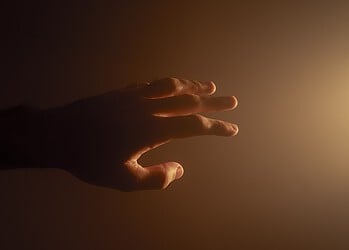
By the time a child picks up a crayon with their left hand, adults often smile knowingly. “There goes a future artist,” someone might say. It’s a story we’ve all heard before, so much that it’s become an enduring myth. Leonardo da Vinci painted with his left hand, Jimi Hendrix played guitar upside down, and M.C. Escher bent reality with his left hand. Surely, left-handers are just wired for creativity.
But a new study bursts this bubble with the cold needle prick of data.
A team of psychologists led by Daniel Casasanto at Cornell University combed through more than a century of research, analyzing decades of experiments and occupational surveys. Their conclusion is quite clear: being left-handed does not make a person more creative. In fact, when measured in lab tests or by professional representation across creative fields, right-handers often have the slight edge.
“The data do not support any advantage in creative thinking for lefties,” Casasanto said. “In fact, there is some evidence that righties are more creative in some laboratory tests.”
A long-standing myth
The belief that left-handed people are more creative isn’t just popular folklore. It’s made its way into scientific literature, often drawing on a few classic examples or small studies showing southpaw superiority on creative tests. This idea traces back to the brain’s hemispheres: the right hemisphere is often associated with divergent thinking—the ability to find novel solutions, make unusual connections, and generate original ideas.
Since left-handed motor control comes from the brain’s right hemisphere, it seemed plausible that lefties had a direct neurological advantage. One influential study even found that squeezing a ball with the left hand could boost performance on creative tasks, supposedly by activating those right-side brain regions.
If that were true, left-handers would be perpetually juicing their creative circuits every time they picked up a pencil, guitar, or power tool.
Casasanto and his colleagues set out to test this alluring hypothesis with hard numbers. Their findings, published in Psychonomic Bulletin & Review, are the most comprehensive review of handedness and creativity to date.
The researchers began by compiling nearly 1,000 studies published since 1900 that investigated handedness and creativity. The final analysis included 17 studies with nearly 50 effect sizes, focusing on the most widely used laboratory tests for divergent thinking: the Alternate Uses Test (AUT), the Remote Associates Test (RAT), and the Torrance Tests of Creative Thinking (TTCT).
Across all these tests, left-handed participants showed no consistent advantage. In fact, in some cases, such as with the Alternate Uses Test, right-handed individuals scored slightly higher.
“If you look at the literature on the whole,” Casasanto said, “this claim of left-handed creativity is simply not supported.”
But the researchers didn’t stop at lab experiments.
Doubling the Evidence
They also dug into occupational data from nearly 12,000 people working across 770 professions. These jobs were ranked based on how much creativity they required, using government surveys that considered originality and inductive reasoning.
The team wanted to see if left-handers were more likely to be found in highly creative professions — people such as artists, composers, architects, physicists, and so on.
Again, the results contradicted popular belief.
While left-handers were modestly overrepresented in art and music, they were underrepresented in most of the highly creative fields, particularly ones like physics, mathematics, and even architecture, where originality and outside-the-box reasoning are crucial. Right-handers, by contrast, were overrepresented in these demanding creative professions.
So why do we keep believing it?
If the evidence isn’t there, why does the myth persist?
One answer lies in something Casasanto and his team call “left-handed exceptionalism.” Lefties make up just about 10% of the population. Creative geniuses are rare too. When these two rare traits overlap — as they do with da Vinci or Hendrix — it feels meaningful, even if it’s just a coincidence.
Another reason is cultural: the romantic notion of the tortured, creative left-hander. People who work in the arts have a higher likelihood of experiencing mental health conditions like depression or schizophrenia. The same conditions have also been linked, tenuously, with left-handedness.
“This idea that left-handedness, art and mental illness go together — what we call the ‘myth of the tortured artist’ — could contribute to the appeal and the staying power of the lefty creativity myth,” Casasanto said.
Finally, the myth thrives thanks to what psychologists call “statistical cherry picking.” In other words, focusing on the few examples that support your belief while ignoring the bigger picture.
“People generalized that there are all these left-handed artists and musicians, so lefties must be more creative,” Casasanto explained.
“But if you do an unbiased survey of lots of professions, then this apparent lefty superiority disappears.”
Creativity is more than handedness
None of this means that left-handers are less intelligent, talented, or capable. The study doesn’t diminish Hendrix’s riffs or Escher’s impossible staircases. It just reframes the conversation.
Creativity, it turns out, is less about which hand you use and more about how you use your mind.
So, if your child reaches for their crayon with the left hand, celebrate their budding artistry but not because of their handedness. Celebrate what they might imagine and create, regardless of which hand they use to hold the brush.






